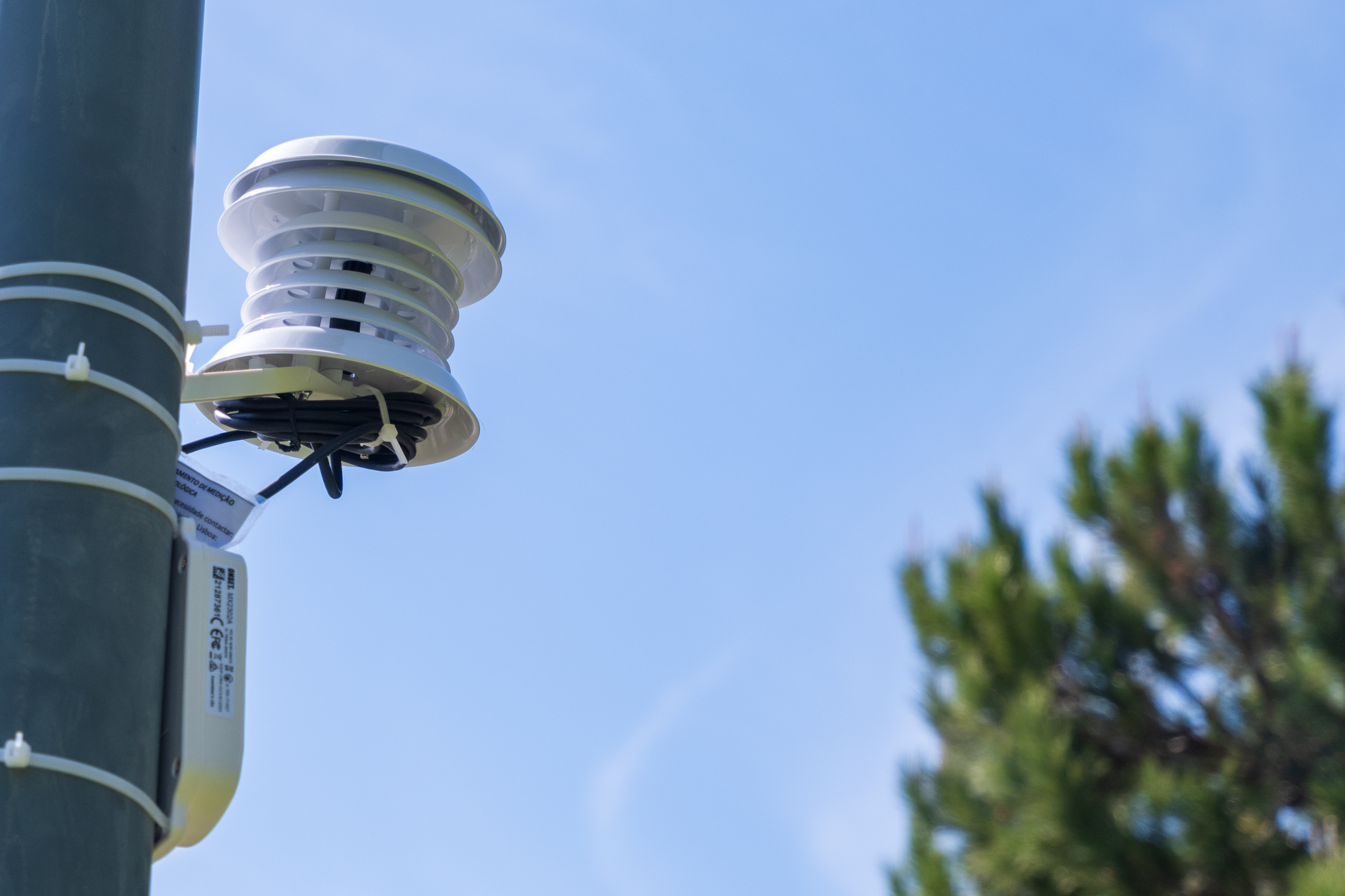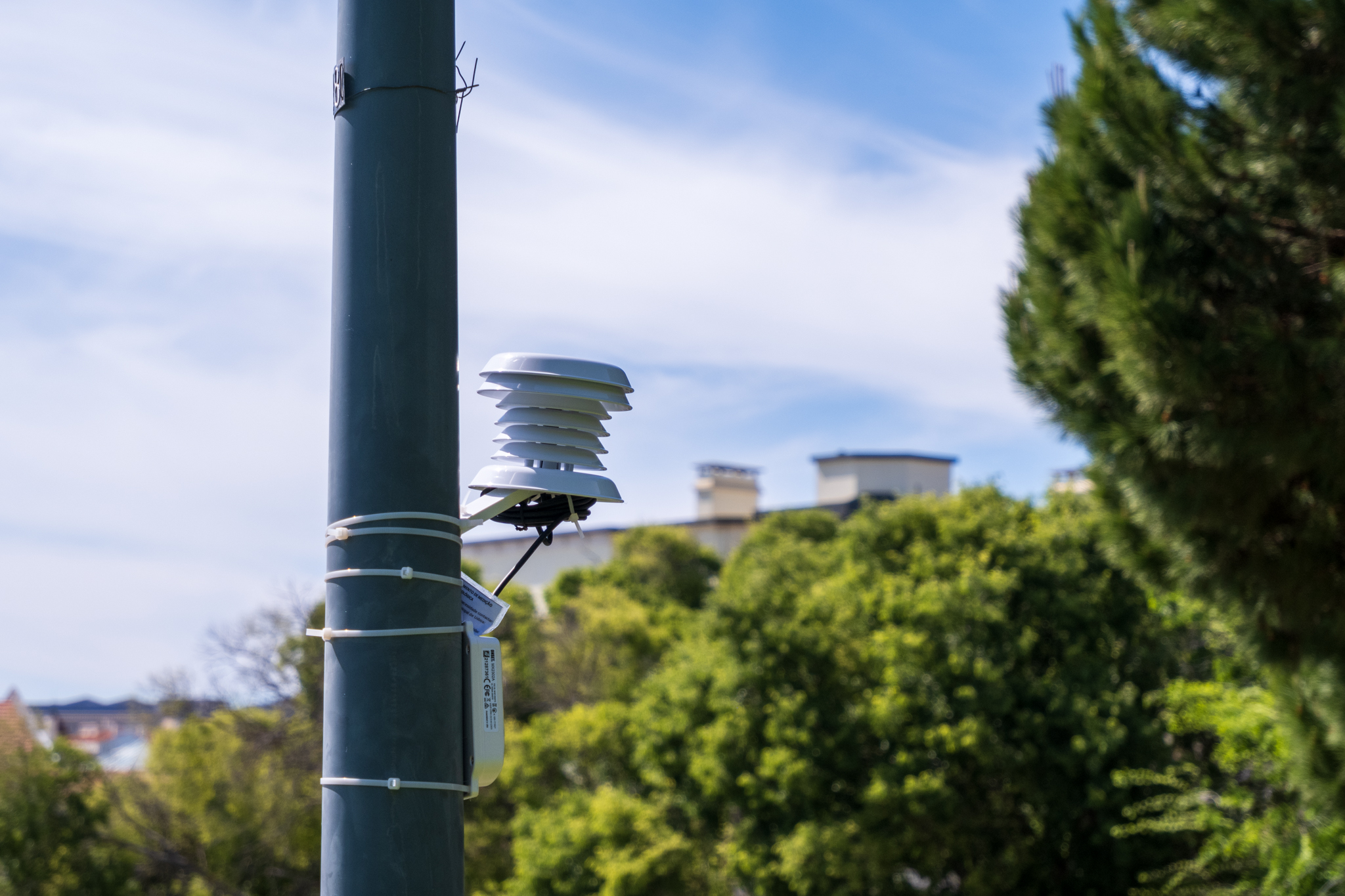
The Lisbon Metropolitan Area is monitoring urban heat islands by installing sensors in eight green spaces in the region. The study is being carried out with the Faculty of Sciences of the University of Lisbon.

After the installation of 18 sensors throughout the Lisbon Metropolitan Area (AML) to monitor various meteorological factors, 16 micro-sensors were installed with the specific aim of studying the phenomena of the urban heat island effect in eight green spaces in the Lisbon region.
This network will support the development of a study of potential areas in AML susceptible to the heat effectand will allow create methodologies to mitigate these heat wavesThe project will also be able to be replicated for climate change adaptation planning in the 18 municipalities of the metropolitan area. It will also enable the development of a high-resolution spatial model of urban climate variables that will facilitate understanding of the factors associated with the urban heat island effect. Based on this understanding, it will be possible to design scenarios for nature-based solutions to improve climate regulation.
Initially, the micro-sensors are being installed in eight green spaces in the municipalities of Almada, Cascais and Lisbon. Since they are highly portable devices, AML says it is always open to relocating them, given some unsatisfactory preliminary results. These are the installation sites for now:
In Lisbon, there is also a sensor in Jardim da Estrela, which is also part of the sensor network recently installed by Lisbon City Council (CML). AML's micro-sensors collect data every 10 minutes, while CML's collect data every hour. For AML, it will be interesting for both its project and CML's to have this additional data for control and monitoring.

Heat islands are a climatic phenomenon of anthropogenic origin, characteristic of areas with a relatively dense urban fabric. This phenomenon is characterized by higher temperatures (1°C to 12°C) and lower relative humidity in urban areas compared to rural areas, and is generally more intense at night and during periods of low wind. The main cause is that artificial structures such as buildings and roads absorb more solar radiation during the day and release it more slowly at night.
However, the release of heat from certain human activities, such as industry or air conditioners, and the greenhouse effect caused by pollutants from factories and/or cars also contribute to raising the temperature in cities and thus creating urban heat islands. In addition, the lack of vegetation in cities encourages this phenomenon, as green spaces can mitigate this effect due to vegetation's evapotranspiration capacity and its shading effect. With climate change, this phenomenon is likely to become more frequent and severe, and could have adverse consequences for the population and biodiversity.
The study of potential areas susceptible to the urban heat island effect in AML is extremely important in order to understand not only the factors that contribute to this effect at a regional level, but also which nature-based solutions can be applied at a local level. High spatial resolution studies are therefore needed to understand which factors are associated with this effect. In areas with special susceptibility to the heat island effect, it is important to design different scenarios of nature-based solutions to improve their climate regulation, in order to protect the health of the resident population and promote their well-being and thermal comfort, as well as increasing community resilience.
The study under development aims to monitor and evaluate urban heat island phenomena in the AML municipalities, in order to define replicable methodologies for mitigating heat waves in urban areas and to inform climate adaptation planning that is transversal and replicable to the 18 AML municipalities. A high spatial resolution model of urban climate variables is being developed to understand which factors are associated with the urban heat island effect and, consequently, the potential areas susceptible to the urban heat island effect in the AML.

The aim is also to understand which nature-based solutions can be applied to improve microclimate regulation in these areas. This model will take into account: 1) terrestrial observation data collected through remote sensing techniques; 2) data from microclimate sensors, which will allow the measurement of the climatic parameters of temperature and relative humidity on a local scale; and 3) lichens, as ecological indicators of the urban heat island effect.
The AML study is being carried out in partnership with the Center for Ecology, Evolution and Climate Change (cE3c) of the Faculty of Sciences of the University of Lisbon (FCUL), as part of the metropolitan project CLIMA.AML - Metropolitan Weather Monitoring and Alert Network, which continues the Metropolitan Plan of Adaptation to Climate Change of the Metropolitan Area of Lisbon. This project has been underway in AML since March 2021 and will run until the end of the first half of 2023.


